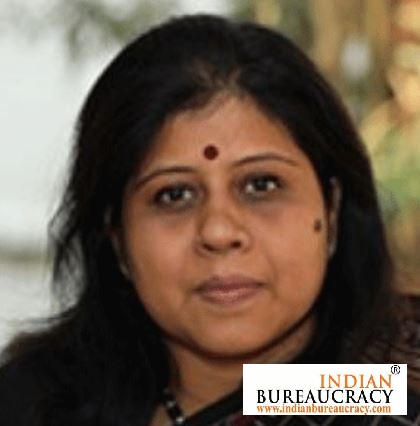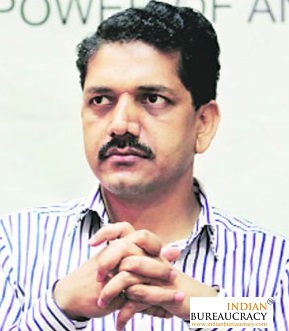In the ever-evolving realm of public systems and governance, the transformation of service
delivery demands a shift from traditional efficiency-focused approaches to inclusive,
community-centric frameworks. Effective public service delivery today is not just about
providing access to essential services but fostering thriving, resilient, and empowered
communities.

Empathetic leadership emerges as a critical driver in this paradigm shift, bridging systemic
gaps and ensuring that governance frameworks are attuned to the lived realities of
marginalized populations. By embedding principles of justice, equity, and diversity into
policymaking and implementation, administrators can dismantle barriers to equitable
participation, redefine success beyond transactional outcomes, and focus on holistic
community well-being.

Ms. Roopa Roshan Sahoo, a 2006-batch IAS officer of Odisha cadre, has been instrumental
in transforming public service delivery through her empathetic and people-focused
bureaucratic practices. As the first and only woman IAS officer in the Chief Minister’s Office
(CMO) in Odisha, she broke barriers and set new standards for governance.
Leading from the Front: The Vision of Roopa Roshan Sahoo
During her tenure as Special Secretary to the Chief Minister of Odisha, Ms. Roopa Roshan
Sahoo, an 2006 batch IAS officer, spearheaded transformative initiatives that not only
improved public service delivery but also redefined governance’s role in addressing the
needs of vulnerable communities.
Her leadership was marked by a commitment to inclusive policymaking, rigorous program
monitoring, and direct engagement with beneficiaries. This ensured that Odisha’s flagship
welfare schemes reached the people they were intended to serve.
With a blend of sociologically-inclined mindset that understands the society and people with
utmost empathy and vision, she introduced Qualitative Monitoring methods for the first
time in core governance and last mile evaluation in Odisha. Such approach helped the
administration gather real time data and insights from real people on the ground, which
helped governance and public system delivery in ensuring transparency and efficiency.
Another aspect of her leadership was reflected through her emphasizing on collaborative
planning, which was first of its kind in high-level decision-making. During her tenure as
Commissioner-Cum- Secretary to the ST & SC Development, Minorities and Backward
Classes Welfare Department, she ensured voices from the grassroots be echoed at
appropriate places which could be reflected through governance decisions. The Mahul Phul
Dialogues brought cutting-edge functionaries, grassroots and community leaders and
practitioners to brainstorm and churn out innovative ideas through collaborative planning
for the welfare and development of marginalised and indigenous peoples.
The Role at the Chief Minister’s Office: A Strategic Nerve Center
As Special Secretary, Ms. Sahoo’s office became a pivotal nerve center for overseeing the
implementation of the state’s social welfare initiatives. As her position at the CMO was a
pathbreaking incident, her people-centric and sociologically conscious decision-making put
her in charge of successful implementation of many welfare schemes. Her responsibilities
encompassed:
Monitoring State Programs: Ensuring flagship initiatives met their objectives across
education, health, and livelihoods.
Facilitating Beneficiary Feedback: Establishing channels to collect insights directly
from the ground for reality checks on program performance.
Addressing Systemic Barriers: Resolving challenges in real-time to optimize service
delivery.
Her leadership extended beyond the confines of office walls. Frequent field visits and
interactions with communities ensured accountability at every level of governance.
A Grassroots-Centric Approach
Ms. Sahoo prioritized direct engagement with beneficiaries, treating them as active
participants in governance. Her consultative meetings with stakeholders and community
members became a platform for co-creating solutions. This approach was particularly
significant for addressing the challenges faced by marginalized groups, including tribal
populations, women, and minorities.
Her methodology included:
Regular Monitoring: Tracking progress, identifying gaps, and swiftly implementing
corrective measures.
Real-Time Problem Solving: Addressing issues like delayed fund disbursements
during field visits, ensuring smooth execution of programs.
Accountability Mechanisms: Establishing transparent systems for tracking progress
and fostering responsibility among officials and community leaders.
Redefining Governance Through Participation
Ms. Sahoo’s tenure set a benchmark for participatory governance, where the voices of
beneficiaries played a central role in shaping policies. By integrating their feedback into
planning and execution, government initiatives resonated with local realities, creating a
stronger impact.
Her belief in collaborative governance is encapsulated in her words: “True progress is
achieved when the people we serve become our partners in creating solutions. Governance
must be inclusive, adaptive, and accountable.”
An Inspirational Legacy
As Special Secretary to the Chief Minister of Odisha, Ms. Roopa Roshan Sahoo set a high
benchmark for public service delivery. Her work demonstrated that governance was most
effective when it was rooted in collaboration, driven by empathy, and focused on tangible
outcomes.
Her tenure at the Chief Minister’s Office served as an inspiring model for how proactive
leadership, combined with a commitment to inclusivity and accountability, can transform
public systems to better serve marginalized communities and create pathways for
sustainable development.
IndianBureaucracy.com wishes Ms. Roopa Roshan Sahoo the very best.



